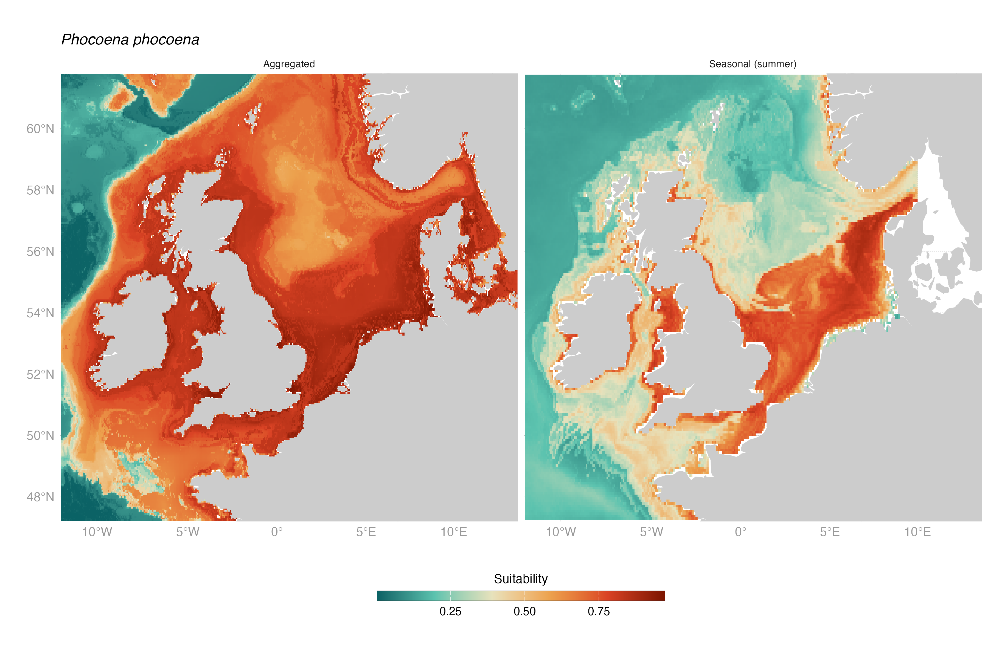The user organisation
MPA Europe project (https://mpa-europe.eu/). The MPA Europe project is using a holistic range of measures of biodiversity from species to ecosystems, including habitats, to map the optimal areas for Marine Protected Areas implementation in Europe. Areas will be prioritised using systematic conservation planning software, which enables alternative weighting of variables and multiple scenarios and thus support wider marine spatial planning. OBIS (https://obis.org/) is responsible for WP3, which will generate species distribution models for at least half of all marine species in Europe to be utilized in the prioritization process.
MARCO-BOLO project (https://marcobolo-project.eu/). The MARCO-BOLO Project will connect existing initiatives, optimising and improving methods, and further innovating technologies to structure and strengthen European marine, coastal and freshwater biodiversity observation capabilities, linking them to global efforts to understand and restore ocean health. VLIZ (https://www.vliz.be/en) is the lead partner for the WP5 which will model and map coastal and marine biodiversity.
EMODnet services used
Two ongoing EU-Horizon projects—MPA Europe and MARCO-BOLO—are working on producing species distribution models to support conservation action. Despite having similar goals, each of these projects is applying distinct (and complementary) methods that will provide a comprehensive overview of the current distribution of key species, as well as potential changes in their future distribution according to IPCC climate scenarios. Species distribution models use occurrence information—where the species was sighted or collected—and environmental data to assess which areas present suitable conditions for the species. This information can help us overcome data deficiencies and map, with high resolution, areas relevant for conservation. The MPA Europe project is working with long-term data aggregations, while MARCO-BOLO is generating models considering different seasons. In both cases, the underlying species occurrence information is sourced from the EMODnet Biology holdings available in OBIS {(due to the connection with the European regional OBIS node) (EurOBIS)}. MPA Europe and MARCO-BOLO are also collaborating and exchanging experiences in distribution modelling. As a case study, models for the harbour porpoise (Phocoena phocoena) were developed and compared, revealing that the different approaches successfully capture the species' distribution.
Both projects utilized occurrence records of Phocoena phocoena, available through EMODnet Biology. MPA Europe utilized the entire dataset, conducting thorough data quality controls and producing temporal aggregations. Meanwhile, MARCO-BOLO also incorporated temporal information (i.e. when the species were sighted in specific locations) as there is a potential strong seasonal component in the distribution of the Harbor Porpoise. Additionally, MARCO-BOLO used EMODnet Bathymetry data as one of the predictors in the model.
It is expected that other products will also be utilized throughout the projects. For instance, MPA Europe plans to utilize EMODnet Seabed Habitats maps to calibrate their models of biogenic habitats. These modelled habitat distribution layers will inform the prioritization process, assigning greater weight to areas inhabited by biogenic habitat-forming species.
The data available through EMODnet Biology are crucial for enabling such modelling, as they aggregate the efforts of multiple researchers and institutions that have been collecting biodiversity information across Europe for centuries. With this information, researchers can produce distribution models to support management at a time when biodiversity patterns are changing at an accelerated pace.
Impact of EMODnet
The availability of open-access biodiversity data was crucial for producing the distribution models. The quality of species distribution models (SDMs) directly correlates with the abundance and completeness of the data. This is particularly true for models considering seasonality, as sufficient data for each time period is necessary. Distribution models are urgently needed to address data deficiencies, offering a more comprehensive understanding of potential species habitats. With this information, researchers can, for example, target new data collection efforts, while policymakers and conservation professionals can establish conservation areas more accurately. Additionally, these models provide predictions on the future distribution of species, acelerating our response to the effects of climate change on marine biodiversity. All researchers and institutions should consider publishing their data on biodiversity portals so they can be available to users through EMODnet Biology.
Open-access biodiversity data is key for creating more accurate and generalizable models that can assist us in addressing the challenges our ocean faces.

Funding Information
MARCO-BOLO is funded by the European Union under the Horizon Europe Programme, Grant Agreement No. 101082021. Views and opinions expressed are however those of the author(s) only and do not necessarily reflect those of the European Union or European Research Executive Agency (REA). Neither the European Union nor the granting authority can be held responsible for them. UK participants in MARCO-BOLO are supported by the UKRI’s Horizon Europe Guarantee under the Grant No. 10068180 (MS); No. 10063994 (MBA); No. 10048178 (NOC).
MPA Europe is co-funded by the European Union under the Horizon Europe programme (Grant Agreement: 101059988). UK participants in Horizon Europe Project MPA Europe are supported by UKRI grant numbers 10067934 JNCC and 10069750 SAMS. Views and opinions expressed are those of the authors only and do not necessarily reflect that of the European Union or UK Research and Innovation. Neither the European Union nor the granting authority can be held responsible for them.
